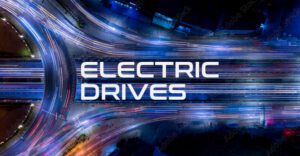Tritium has partnered with electric vehicle charging network operator ChargeNet with a plan to install RTM direct current (DC) fast chargers at South San Francisco Taco Bells to address this challenge.
As the number of electric vehicles (EVs) is expected to continue growing – up to 35 million are expected on US roads by 2030 according to a Business Insider report from March 2021 – charging infrastructure is expected to need to expand commensurately to support the increased electric car adoption.
The partnership, which is expected to expand in other areas, leverages funding from the California Energy Commission’s California Electric Vehicle Infrastructure Project (CALeVIP) and the California Public Utilities Commission’s (CPUC) Self-Generation Incentive Program (SGIP).
Tosh Dutt, ChargeNet CEO, said: “Our goal is to replace the refuelling experience that Americans know with a charging experience that is fast, convenient, and inviting.
“Our first installation is just the beginning of realising that goal, and will be the first of many as we look to expand charging opportunities throughout the Bay Area and other parts of the country in the hopes of increasing adoption of EVs, especially in lower-income areas.”
The companies broke ground on the installation last month and the chargers are anticipated to be operational by the end of October. The 75kW Tritium RTM fast chargers can provide up to 46 miles (74km) of range in 10 minutes and will accept payment through ChargeNet’s mobile app and a credit card reader on the charger.

ChargeNet’s EV charging platform, specifically designed for fast food franchises, fills a market need for more fast chargers at locations with food and toilet facilities.
ChargeNet also hopes to integrate food ordering and payment to make the process even more seamless for customers. And to lower energy costs and protect from power outages, the installation will utilise solar and energy storage technology to power the chargers and provide more competitive rates to Taco Bell customers.
SG Ellison, president of Diversified Restaurant Group, who operates nearly 250 Taco Bell and Arby’s in five states, said: “We’re always looking for opportunities to do things that haven’t been done before and especially those that create a ‘win-win’ for our customers, the community and our business.
“We’re looking forward to providing our customers with the opportunity to charge their vehicles on Tritium’s market-leading technology.”
The installation will not require any further utility service upgrades, only requiring one additional meter to support the chargers. Additionally, as a result of ChargeNet’s unique service model and use of incentives, Diversified Restaurant Group will pay nothing upfront and take home a portion of the revenue generated from the chargers, along with bringing in EV drivers as customers.
The SGIP funding includes prioritiSation of communities living in high fire-threat areas, communities that have experienced two or more utility Public Safety Power Shut-offs (PSPSs), as well as low-income and medically vulnerable customers.
Funding from CALeVIP provides incentives for EV infrastructure across the state with additional funding for charging projects located in low-income and disadvantaged communities.
Hannon Rasool, deputy director of the Fuels and Transportation Division at the California Energy Commission, said: “CALeVIP has been a successful program in deploying public chargers throughout California and targeting disadvantaged communities.
“The innovation and creativity of deploying chargers where other amenities such as food services are co-located should be emulated across the nation to provide access to charging where consumers already travel.”
Tritium’s RTM fast chargers are built for any environment and feature a modular power unit design that allows the charger to quickly be upgraded from 25kW to 50kW and 75kW of power. The power units are also single-person operable so they can be easily changed in the field for faster maintenance and improved uptime.
Mike Calise, Tritium president of Americas, said: “This project is a shining example of integrating solar, battery storage, and DC fast charging to help fast food restaurants serve a rapidly expanding EV driver customer base.
“These are the types of innovative solutions that have a double benefit – decarbonising the planet in the long-term, while creating more resilient businesses in the short-term.”
Hopefully, more service stations, food outlets, coffee shops and supermarkets will follow suit as they’re the perfect locations for drivers to charge their electric cars.




